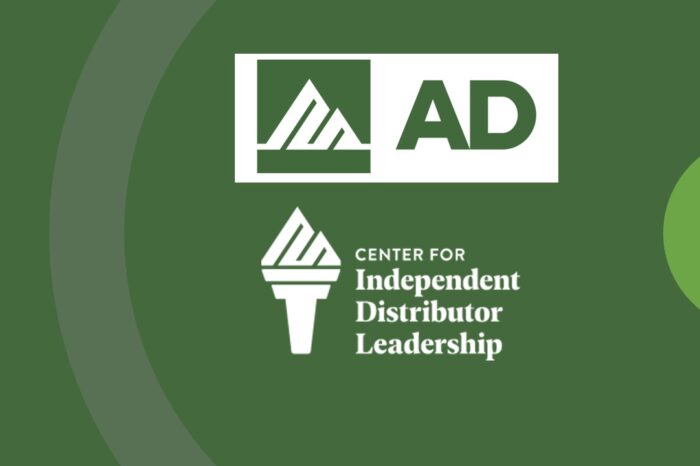SPAs … Sales and Profit Drivers

SPAs, a way to wrap sales and profit
SPAs, or special pricing agreements, have been generating much attention in the industry in the past year. A number of technology companies have descended upon the electrical industry to “enhance / improve” the SPA management process, all in the name of “digital transformation.”
And while some may say the model is inefficient because it is not standardized with an industry model, or how “they / their system” can administer the process for distributors and manufacturers, according to research Channel Marketing Group conducted 10+ years ago (if you’d like a copy of the white paper we wrote for a technology company that shared some industry insights, email me) and within the past 2 years, the process is much more efficient, and streamlined, than ever before.
To think that national chains, who probably have invested into improving the process for themselves will acquiesce to others’ models infers that they are willing to “level the playing field” given that, there are profit opportunities whenever there are inefficiencies.
But, SPAs are more than operational costs. They are ways to increase sales, improve profitability and can be customer retention tools when used strategically within a business whether companies have customer-specific SPAs, customer class SPAs, vertical market SPAs or some other model.
I’ve known national chains that had departments that identified customers that should be on SPAs and then made applicable adjustments, in the name of profit improvement, and companies that have used SPAs to generate customer conversions and stimulate growth.
The key is having a strategy. (Here’s an article on ElectricalTrends from 2009 titled “SPAs … A Key to Tomorrow’s Distributor Profitability, Essential Today
Given the increased interest in SPAs, I asked Mark McGready, who developed a SPA system to help optimize the process, 12 questions to shed some light on SPAs.
12 Questions about SPAs with Mark McGready
- Define SPAs / ship and debit initiatives for our audience?
- A Special Pricing Agreement is essentially a credit adjustment – it’s a financial tool. Distributors normally buy product from suppliers at their into stock price. Then they sell it at that cost. With a SPA, the manufacturer intends to reduce the into stock price, but only for certain particular customers, so it can only happen when the customers actually buy the item. So it’s an into stock price adjustment after a sale, to allow discounting and price targeting in the marketplace and still keep the distributors profitability intact. Without the SPA the distributor would have to absorb all the price discounts, or the distributor wouldn’t be able to fulfill the order.
- Why do we need SPA’s?
- Almost every B2B environment has a diverse customer base with different product demand patterns. When you have one customer buying 10 units and another buying 1,000 you can’t satisfactorily serve them both with the same price. Pricing is driven by scale and demand. The challenge then is how do you facilitate the different pricing? Some companies take orders direct, some use allocated inventory, some ship special customer specific orders to their distributors. All add cost to the operational process compared to being able to serve the customer from the distributors inventory.
- If you try and sell the small customer and the large customer at the same price, you’ll either destroy your profitability or won’t be able to compete for the large customers. The nature of a diverse demand customer base is needing diverse pricing strategies.
- What, typically, is a distributor’s biggest challenge with SPAs?
- Far and away it’s the administration, which is burdensome, inefficient, complex, and costly if anything goes wrong. Missing claims or having claims denied will cause damage to their profitability. A lack of a strong, clear and easy to use SPA process makes most companies weary of them – not because they’re a bad idea, but because too often they’re administrated awfully.
- What % of a distributor’s business should be influenced by SPAs? What’s a good benchmark? How does this change by size of distributor?
- It changes for each distributor, but it’s simply a reflection of their own customer base. If you’re a distributors where 80% of your stock revenue comes from 20% of your customers, you need to have special pricing for those 20% (and therefore 80% of your revenues). So it’s really down to how diverse and special your customer mix is. In industries like electrical, most locations have a small portion of their customers delivering a large portion of their revenues, and that means SPA’s are required to make that model work.
- While there’s talk about industry portals for SPA management, in the future, how “easy” and “automated” is SPA management with the key ERP systems? (Epicor – Eclipse, Prophet 21, DDI, Infor, NetSuite)
- SPA administration should be an automated process. It’s fed by transactional data which every ERP creates today. Each transaction should be reviewed to identify if a SPA exists for that product-customer combo, and makes the rebate claim, which is then paid automatically by the manufacturer. With good infrastructure tens of thousands of SPA transactions could happen every day without the need for human support.
- The core issue is that this mechanism hasn’t been addressed from an industry standpoint. So each manufacturer has their own process, following their own rules, with their own terminology. We live in a society where we’ve agreed to use common utilities and highways, and the SPA process is essentially a data highway. If industries could agree to have one process they can control and govern it would be a situation where ‘government’ made life better for everyone.
- Who(m) within a distributor should be responsible for a company’s SPA strategy based upon the size of the company ?(i.e. companies <$100M, companies $100-500M, companies $500M+)
- I think with all sizes the SPA strategy begins with sales. They’re the tip of the spear who are taking the product to market, they can identify the diversity in customer demand and how pricing can be such a critical sales tool. In some markets you might need the majority of your sales on SPA’s, in others you might need hardly any. A SPA is a price strategy implementation tool – it’s essentially a quotation tool with a different mechanism to administrate the accounting.
- How could companies optimize their usage of SPAs?
- A strong SPA strategy allows you to fully use price as a sales tool without reducing your profitability unnecessarily in other parts of your business. When demand patterns are different amongst your customer base, so too should be your pricing strategy. The guy buying 10 units pays more than the guy buying 1,000 units because he should pay more. Stratifying margins like this allows you to maximize your income while still having profitable margins. And ultimately, the companies who are focused on price optimization will be far more profitable than those who aren’t, and so they’ll end up better resourced and stronger in the market in all levels.
- How would you rank these recommendations in order of priority?
- Price optimization should be near the top of the priority of any business. If operations and logistics are the engine of a business, money is the oil that makes them work. Profitability isn’t something that can be left to chance in the hope it works itself out – your gross income is as important as your sales assets, inventory assets & market history and knowledge. Unfortunately not enough people put the resources in to focus on pricing.
- What should sales management, and salespeople, know about a company’s SPAs? How could they proactively use them to capture business from new customers? From existing customers?
- When you’re in an industry where everyone is selling the same product, to the same customers, with the same services and support, price typically becomes the big differentiator. Being aggressive on price without SPA support is a self inflicting wound, like the government running on deficits that ultimately cause long term damage. So you need to be smart on how you use price to shift customer sentiment. However, you must be careful using SPA’s so you’re like a surgeon with a scalpel rather than a meathead with a sledgehammer. If you don’t have a culture of using SPA’s or being smart about them you’ve got a sledge wielding sales organization.
- What should manufacturer salespeople / reps know about SPAs? How could they be more effective in using them to increase their manufacturer’s business?
- When a distributor makes a sale so does a manufacturer. That means manufacturer salespeople and reps need to be as aware of and as articulate on a distributors business as the distributors themselves. Too often I find SPA’s a something folks don’t know a lot about, and don’t want to know a lot about. Again because they’re seen as difficult and there’s horror stories about how they’ve been administrated. However, price theory and profit segmentation should be the first class in every business school and to be fair I think they’re familiar subjects with almost everyone who’s worked in the industry any length of time. So it’s more a matter of becoming more involved and demanding better results and support for SPA’s. As most of those folks are commission based, the secret to great commissions is the same secret to great price strategy.
- As a manufacturer, should you want to do more or less business via SPAs?
- As a manufacturer first take a look at your customer base. Understand how your product is being consumed today, and define how disparate your customers are. If every customer looks the same, acts the same and buys the same then you don’t need much diversity in your pricing. If you have radically different sizes and types of customer then you need more targeted pricing, and SPA’s are the most cost effective way to deliver that unique pricing. So it really depends on who you are as a company, but I would suggest that few companies have the level of SPA business they should. Again because they’re not investing the processes and infrastructure to make them easy, but making a SPA claim should be as easy for a distributor as placing a stock order.
- Overall … how much should SPAs help distributors, manufacturers and reps in improving their sales? In improving their net profit? Is the incremental profit worth the incremental cost / effort?
- SPA’s are the pathway to profitability, increases resources, market expansion, revenues growth, sales stability and inventory utilization. To me it’s unquestionably one of the processes companies should be great at. And it’s also a fairly simple process to become great at – it just takes focus and understanding. Embracing the idea rather than treating it as something you have to do.
- No corporate effort will deliver the same return on investment as price management. Not hiring new people, not new ERP’s, not new warehouses, not acquisitions, not marketing and promotions. Price improvement and optimization is the single best return any company could invest in. If companies really took the time to see how much they could impact their bottom line I think we’d see a huge shift in the attitudes towards ‘working with the data’.
About Mark McGready – After 25 years in the electrical industry Mark has spent too much time thinking about SPA’s and seeing them be misunderstood and misused between both manufacturers and distributors. He’s also seen some companies use SPA’s like cheat codes to run rings around their competition. If you’d like to hear more, Mark can be reached at mark.mcgready@sparxiq.com or mmcgready@naed.org or mmcgready@idea4industry.com – he works with all three! Mark is NAED’s Independent Data Analytics Advisor, IDEA’s Director of Data Solutions and Integration, and SPARXiQ’s Director of Channel Analytics.
Some Takeaways and Thoughts
- Last summer a number of people felt that distributor profitability may have hit its heyday. This was due to the confluence of COVID-driven growth, inflation and price increases. All of this lead to higher distributor gross margins as well as higher rebates. Maintaining profitability will be a challenge in a slowing growth market (or worse). The market may be “back to normal” (low single digit growth). Effective usage of SPAs as a strategic sales and profit initiative can help support distributor profitability.
- While industry-wide SPA process standardization may be feasible, maybe even desirable, getting national chains to agree on a singular process to drive supplier adoption could be, in golf terms, “a long put.” Chains may perceive they have superior models, distributors have different inventory accounting models (LIFO, FIFO, average, etc) and there are ERP process issues, and supplier IT and Finance departments agreeing on an industry model is anathema to their thought process (and probably would mean legal also would need to get involved.) It may make sense, it may reduce industry costs, it may generate significant benefits but … human nature.
- Consider a SPA Team … sales management, purchasing management and a data analyst to do the “hard work.” Probably need to pull in IT at some point to help refine processes. It’s also a sales training issue … which suppliers, how to negotiate with customers, when to use / how to be proactive, regular analysis to drive incremental business and account penetration and more.
For many distributors this has been an accidental, perhaps incidental, business strategy. Perhaps being intentional can drive sales, profits, customer penetration and hence customer retention?
Have a question, or an opinion, re SPAs? Feel free to reach out to Mark at one of his email addresses. If you’re a distributor, there’s a decent chance he “works for you” given he works for NAED, IDEA and SPARXiQ. Or leave a comment and I’ll get Mark to respond, if appropriate. Mark will also be at the NAED South Central, if you’d like to connect with him.























